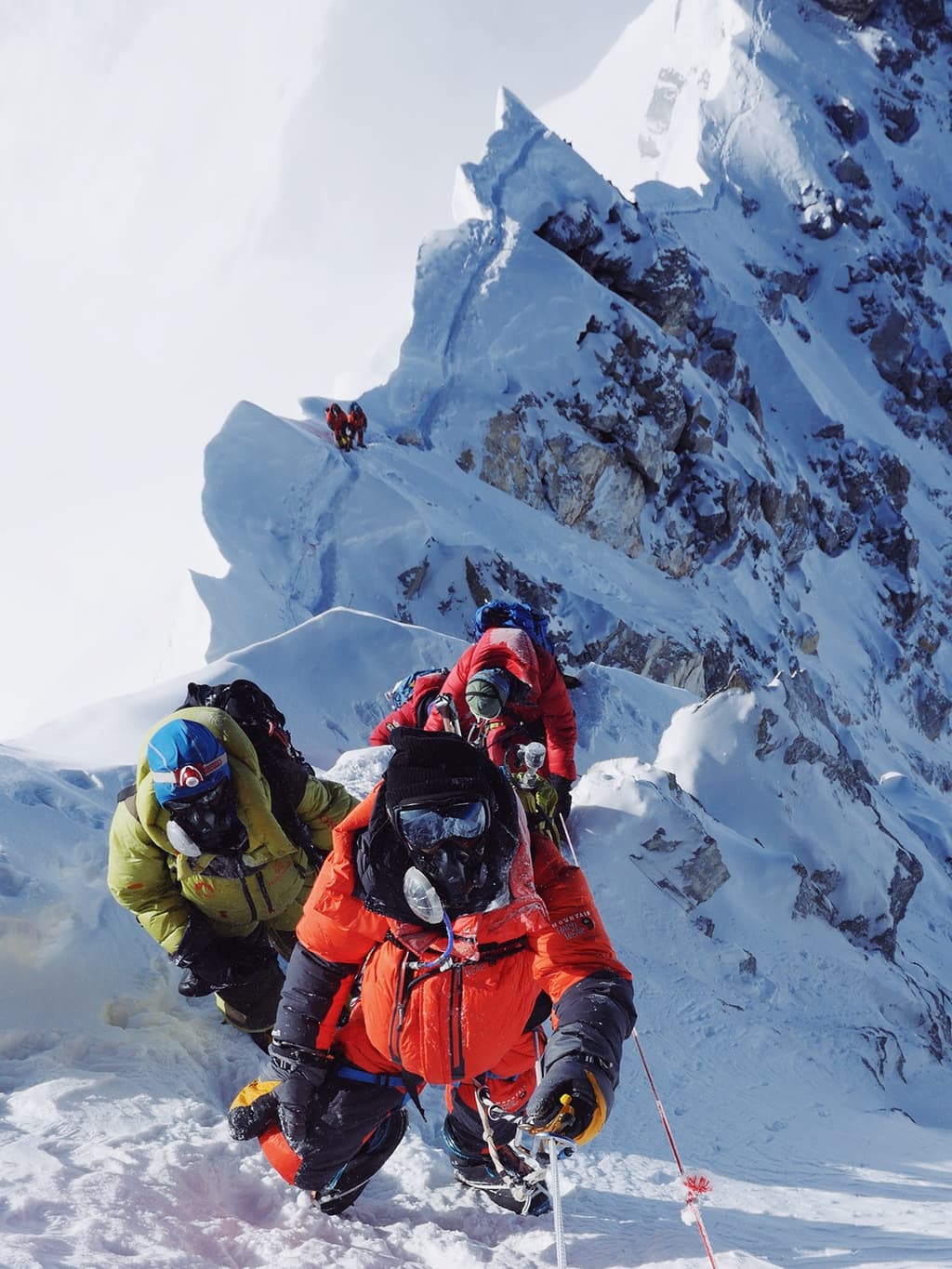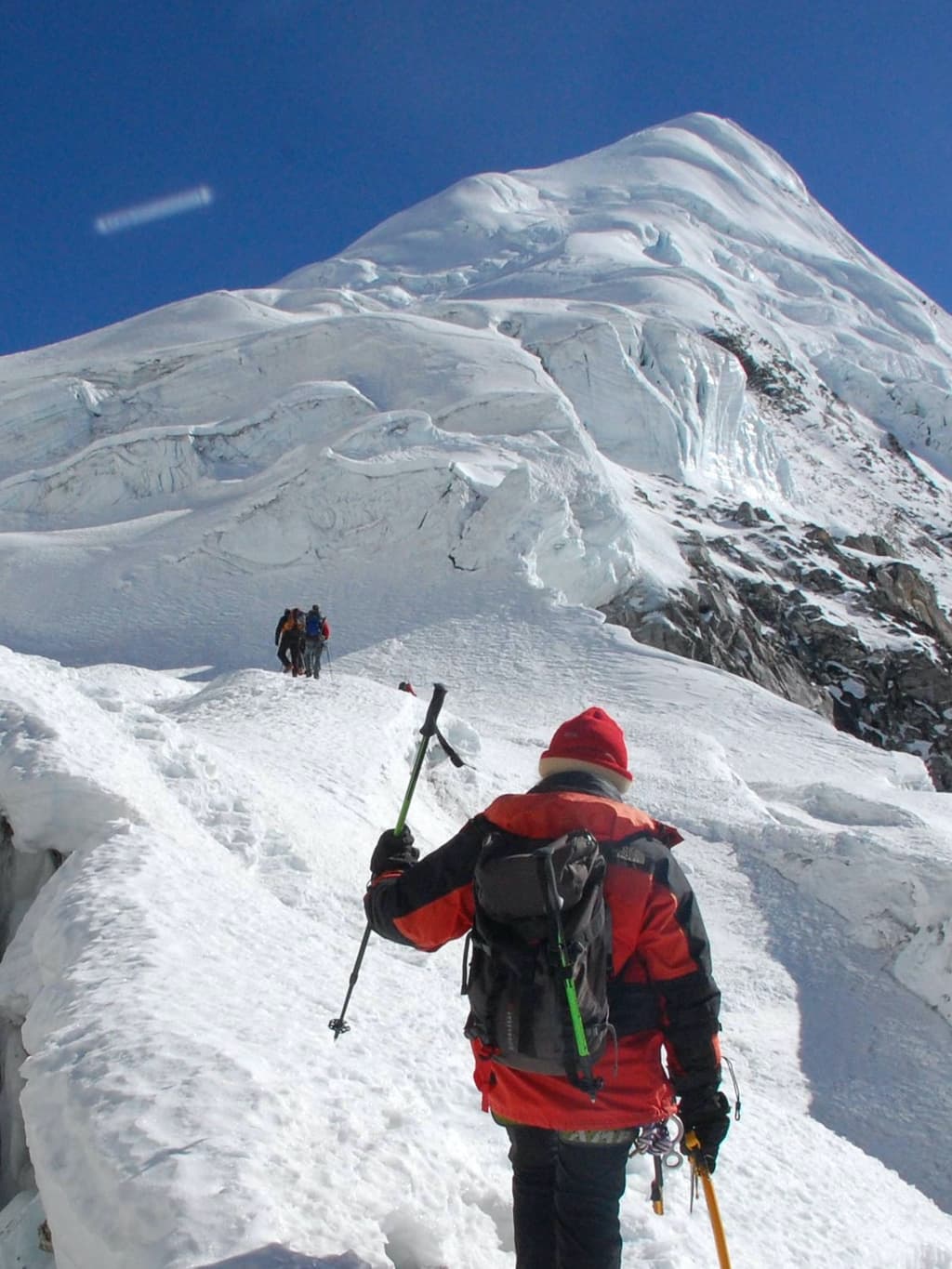Ready for a climbing challenge beyond the mainstream? The Baruntse Expedition (7,129m) offers serious mountaineers a perfect balance of technical climbing without the crowds of more popular peaks. Our team at Everest Sherpa Expeditions has guided climbers up this stunning mountain for over many years.
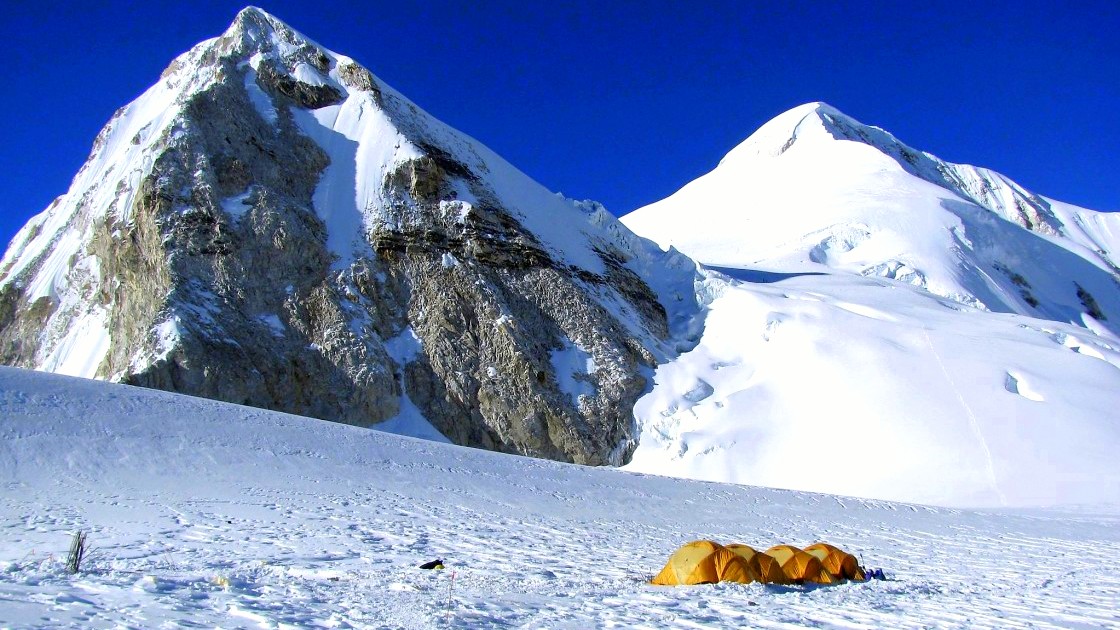
This guide is for experienced climbers looking to add a 7000m peak to their achievements or those transitioning from trekking to technical mountaineering. We'll walk you through our comprehensive preparation process, break down the route day-by-day, and highlight the unique cultural experiences that make climbing with local Sherpa guides so special.
Ready to discover why Baruntse should be your next Himalayan adventure? Let's dive in.
Baruntse Expedition Overview
The Majestic Baruntse Peak (7,129m) - Nepal's Hidden Gem
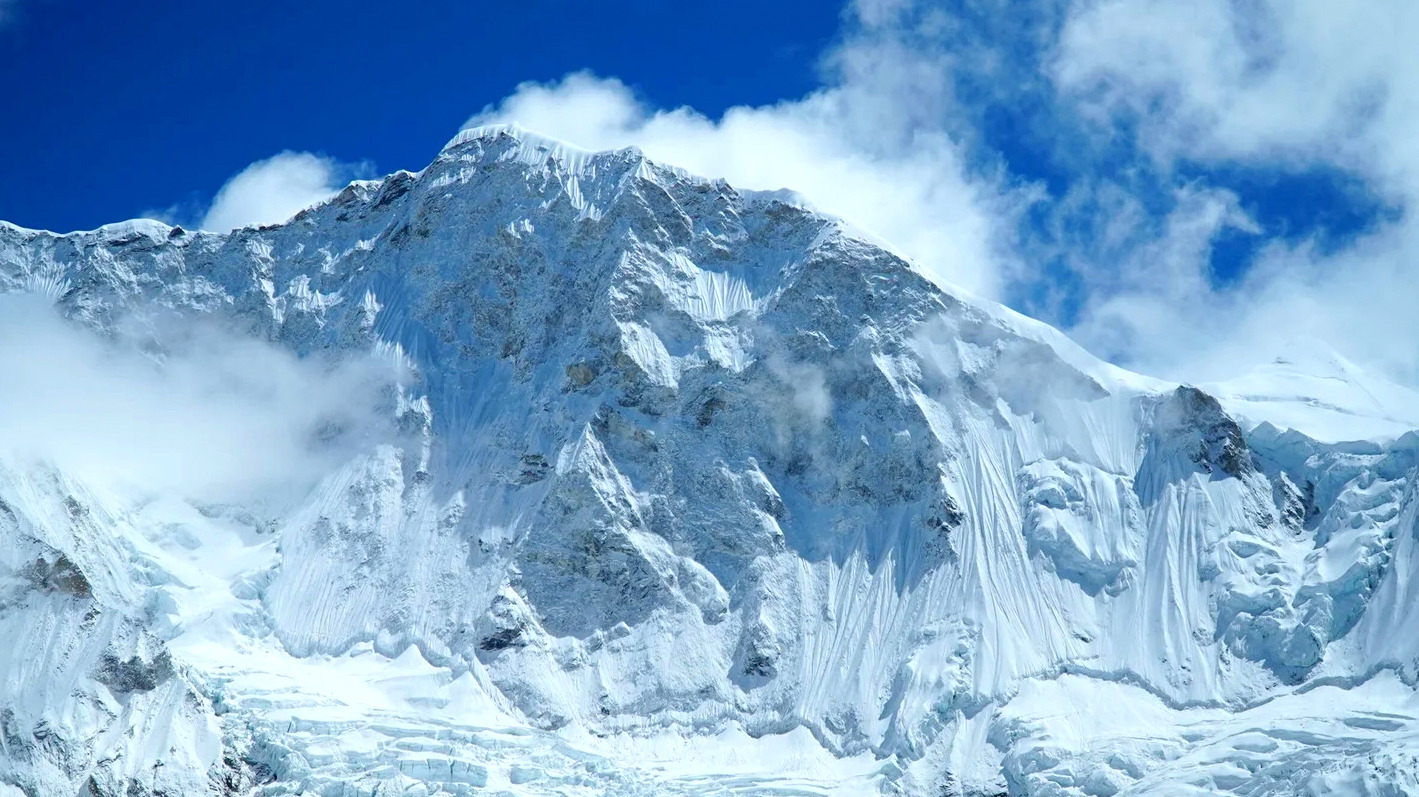
While everyone's fighting for space on Everest, we've been quietly guiding climbers up one of the Himalayas' most spectacular treasures. Baruntse stands tall at 7,129m in the Khumbu region, offering breathtaking views of Everest, Lhotse, Makalu, and Ama Dablam.
What makes Baruntse special? It's the perfect balance. Technical enough to be a genuine achievement, but accessible enough for mountaineers looking to step up from trekking peaks. The standard Southeast Ridge route combines snow slopes, ice cliffs, and a stunning final ridge that'll make your heart race for all the right reasons.
Our climbers tell us the same thing over and over - Baruntse gives you that authentic Himalayan expedition experience without the crowds. You'll see corners of Nepal that most trekkers miss completely.
Why Choose Baruntse with Everest Sherpa Expeditions
We're not just another climbing company - we're local Sherpa guides who've grown up in these mountains. Our team has summited Baruntse countless times, and we know every crevasse, weather pattern, and campsite on this mountain.
Our expedition includes:
-
1:2 guide-to-climber ratio for maximum safety
-
Premium camping equipment and high-altitude food
-
Comprehensive pre-climb training on nearby peaks
-
Expert route selection based on current conditions
Unlike larger operators, we keep our groups small (maximum 8 climbers) to ensure personalized attention and increase summit chances.
Best Seasons for a Successful Climb
Timing is everything in the Himalayas. We've guided Baruntse expeditions for over 15 years, and we've pinpointed the optimal climbing windows:
Pre-monsoon (April-May):
Snow conditions are typically stable, temperatures moderate, and days longer. The mountain shows off with spectacular ice formations and generally clearer mornings.
Post-monsoon (September-November):
Our favorite season! The stable weather patterns, fewer precipitation events, and crisp visibility make autumn climbs particularly rewarding. The landscape transforms with golden light that photographers dream about.
We avoid winter climbs due to extreme cold and dangerous wind conditions, and summer climbs because of monsoon instability. Our success rate speaks for itself - over 85% in our preferred seasons compared to the industry average of 60%.
Preparing for Your Baruntse Adventure
Essential Physical Conditioning Tips
Climbing Baruntse isn't something you just wake up and do. We've guided countless climbers up this 7,129m peak, and proper physical preparation makes all the difference between a miserable struggle and an exhilarating challenge.
Start training at least 4-6 months before your expedition. We recommend focusing on:
-
Cardiovascular endurance: 3-4 sessions weekly of hiking, running, or cycling (45-60 minutes)
-
Strength training: Emphasize legs and core 2-3 times weekly
-
Load carrying: Practice hiking with a 15-20kg pack
-
Altitude acclimatization: Prior experience at 5,000m+ is invaluable
The secret most climbers miss? Stair climbing with a weighted pack. It's boring as hell, but it works wonders for summit day.
Technical Skills Required for Baruntse
Baruntse demands solid mountaineering skills. We've seen strong athletes struggle because they lacked technical proficiency.
Must-have skills before arriving:
-
Fixed rope techniques (ascending and descending)
-
Cramponing on steep ice (front-pointing)
-
Ice axe self-arrest
-
Crevasse rescue basics
-
Rope team travel
Need practice? We recommend taking a comprehensive mountaineering course before tackling Baruntse. Many of our successful climbers joined smaller expeditions on peaks like Island Peak or Mera Peak first.
Recommended Gear and Equipment
Baruntse throws everything at you - from scorching sun at base camp to -30°C winds near the summit. Our gear list is refined from decades of experience:
Technical Gear:
-
Climbing harness
-
Ascender/jumar
-
Descender/belay device
-
Crampons (with anti-balling plates)
-
Ice axe
-
Helmet
-
2 locking carabiners
-
3 non-locking carabiners
-
7mm accessory cord
Clothing:
-
Down suit for summit day
-
Multiple insulating layers
-
Waterproof shell (jacket and pants)
-
Expedition boots (double or triple)
-
Expedition mittens and liner gloves
We provide group equipment like ropes, snow bars, and cooking gear, but your personal kit must be top-notch and tested before arrival.
Obtaining Necessary Permits
Navigating Nepal's permit system can be tricky, but we handle all the paperwork. For Baruntse, you'll need:
-
Baruntse Climbing Permit: $450 per person (spring), $225 (autumn)
-
Makalu-Barun National Park entry fee: $30
-
TIMS Card: $10
We require your passport details at least 45 days before arrival to process everything smoothly. The permit process involves submitting documents to the Nepal Ministry of Tourism and dealing with the National Park office.
One thing most agencies won't tell you: permit prices often change seasonally, and unexpected "fees" sometimes appear. We build small buffers into our expedition costs to handle these surprises without bothering you.
The Baruntse Expedition Route
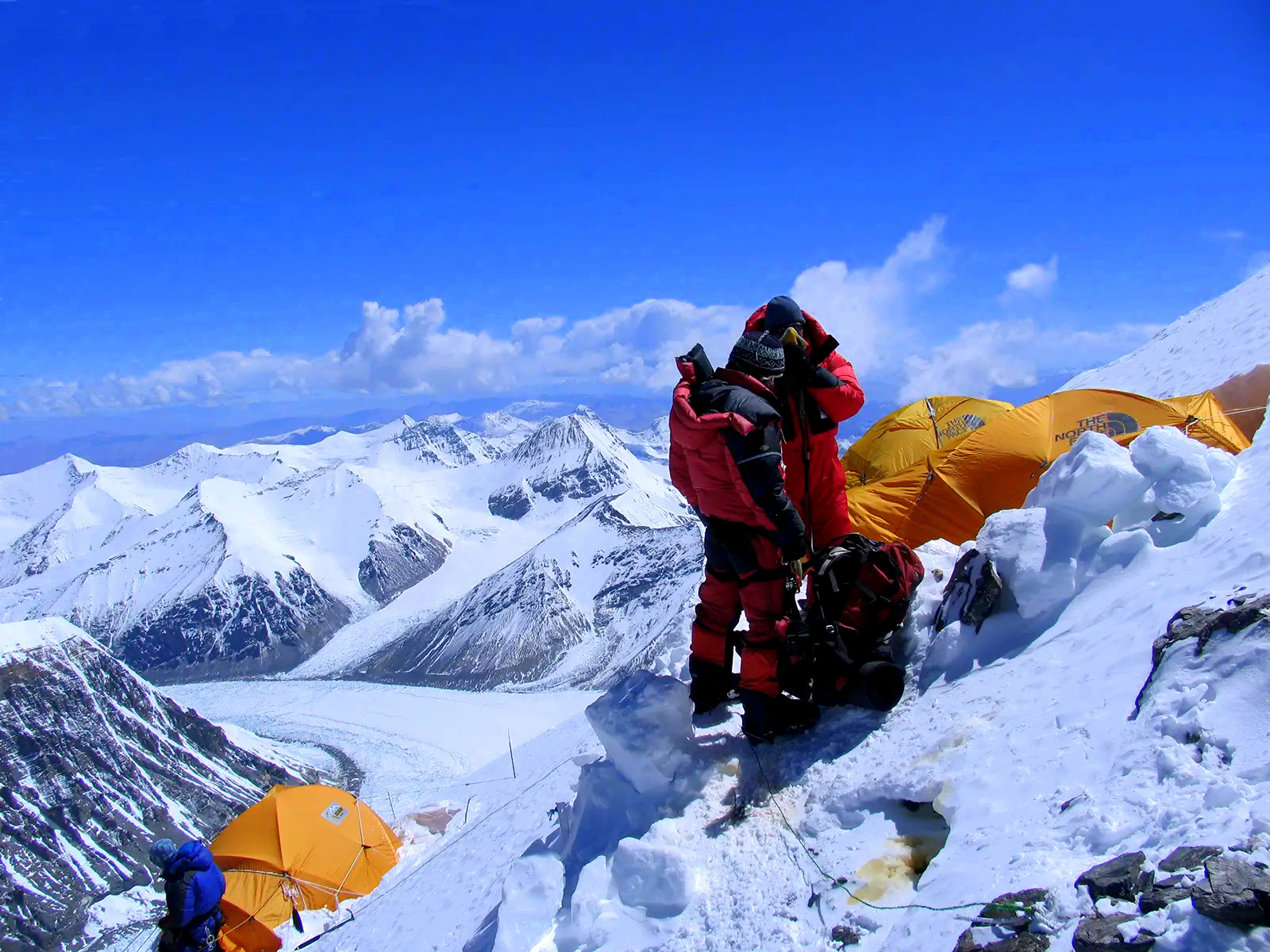
Journey from Kathmandu to Lukla
Our Baruntse expedition kicks off in the vibrant capital city of Kathmandu. After a comprehensive team briefing and gear check, we board an early morning flight to Lukla – the gateway to the Everest region. This 35-minute flight offers stunning views of the Himalayan range before landing at the famous Tenzing-Hillary Airport, perched at 2,860m.
The Lukla landing is an adventure itself! The short runway sits on a slope between mountains and cliff edges – your first taste of excitement on this journey. Upon arrival, we meet our support team of porters and yaks who'll carry our expedition equipment.
Trekking Through the Breathtaking Khumbu Valley
From Lukla, we begin our trek through the iconic Khumbu Valley. The trail winds through rhododendron forests, crosses suspension bridges over roaring rivers, and passes through traditional Sherpa villages like Phakding and Namche Bazaar.
Namche, sitting at 3,440m, serves as our first major acclimatization stop. The bustling market here offers last-minute supplies and the famous bakeries provide delicious treats before we head deeper into the mountains.
As we continue higher, the landscape transforms dramatically. Pine forests give way to alpine meadows and eventually rocky terrain. We pass the famous Tengboche Monastery with its backdrop of Ama Dablam, arguably one of the most stunning mountain views on Earth.
The trail then leads through Dingboche and Lobuche before reaching Kongma La pass (5,535m), from where we descend into the remote Hunku Valley – leaving the standard Everest Base Camp trail behind and entering true wilderness.
Acclimatization Strategy and Schedule
We don't rush this expedition. Proper acclimatization is crucial for both safety and summit success. Our carefully designed schedule includes strategic rest days at key elevations:
-
Day 3-4: Namche Bazaar (3,440m) – Including a day hike to higher elevation
-
Day 7-8: Dingboche (4,410m) – With an acclimatization climb up Nangkartshang Peak
-
Day 11-12: Baruntse Base Camp (5,400m) – Rest and short climbs to prepare for higher altitude
Our itinerary follows the "climb high, sleep low" principle. On acclimatization days, we hike to higher elevations then return to sleep at lower altitude, helping our bodies adapt gradually to decreasing oxygen levels.
We closely monitor everyone's health with regular checks of oxygen saturation levels and symptoms. Our experienced medical team is always ready to address any altitude-related issues that might arise.
Base Camp Setup and Facilities
Our Baruntse Base Camp sits at 5,400m on a relatively flat area of the West Barun Glacier. We establish a comfortable setup that becomes home for nearly two weeks.
The camp features:
-
Individual sleeping tents (with thick foam mattresses)
-
A spacious dining tent with tables and chairs
-
Communication tent with solar charging station
-
Kitchen tent where our talented chef prepares hearty meals
-
Toilet tents and basic shower facilities
We take pride in our base camp comfort. Hot meals are served three times daily, with snacks and hot drinks always available. Our menu balances nutrition and taste – keeping energy levels high while satisfying mountain appetites.
From base camp, we establish three higher camps for our summit push, with Camp 1 at 6,100m, Camp 2 at 6,400m, and Camp 3 at 6,800m.
Summit Push Route Description
The climb to Baruntse's 7,129m summit is technically challenging but incredibly rewarding.
From Base Camp, we navigate the West Barun Glacier to reach Camp 1 (6,100m), negotiating crevasses using ladders and fixed ropes. The route to Camp 2 (6,400m) involves climbing steep snow slopes with sections up to 60 degrees.
The most technical section comes between Camp 2 and Camp 3 (6,800m) – the infamous ice cliff that requires skilled climbing with ice tools. Our Sherpa team fixes ropes on this section, making it safer but still demanding.
Summit day starts around midnight from Camp 3. Headlamps illuminate our path as we tackle the steep ridge leading to the summit plateau. The final section includes a knife-edge snow ridge with breathtaking exposure on both sides.
The summit rewards us with unparalleled 360-degree views of Everest, Lhotse, Makalu, and countless other Himalayan giants. After brief celebrations and photos, we begin our careful descent, typically returning to Camp 2 before nightfall.
Climbing Techniques for Baruntse

Navigating the Southeast Ridge
The Southeast Ridge of Baruntse is where the real adventure begins. We've guided countless climbers along this route, and it never fails to challenge even the most experienced mountaineers. The ridge demands a combination of technical skill and mental fortitude.
Our approach starts with fixed ropes on the steeper sections. We typically set these up during our acclimatization rotations, ensuring they're secure for summit day. The ridge features several rocky outcrops that require basic rock climbing skills – nothing too technical, but you'll need to be comfortable with your crampons on mixed terrain.
What makes this route tricky? The exposure. On both sides of the ridge, you're looking at significant drops. We always emphasize maintaining three points of contact and proper clipping techniques through the fixed lines.
Ice and Snow Climbing Sections
Baruntse throws some serious ice and snow challenges your way. We encounter snow slopes ranging from 40-60 degrees, with occasional ice sections that demand proper technique.
Our teams use a combination of French technique (flat-footing) on moderate slopes and front-pointing on steeper ice sections. The summit pyramid particularly requires solid front-pointing skills and confident ice axe placement.
Equipment is critical here:
-
We recommend dual ice tools for the steeper sections
-
Crampons must be well-maintained with sharp front points
-
A combination of ice screws and snow pickets make up our protection arsenal
Over years of guiding Baruntse, we've found that practicing these techniques during our training days at base camp significantly improves summit success rates.
Managing High Altitude Challenges
Baruntse sits at a punishing 7,129m (23,389ft), where the air contains roughly 40% less oxygen than at sea level. We take altitude management extremely seriously.
Our acclimatization schedule follows a proven "climb high, sleep low" approach with multiple rotations before summit push. Most climbers experience some symptoms of altitude – headaches and disturbed sleep are common. We monitor everyone's oxygen saturation levels daily and make adjustments to our plan accordingly.
Proper hydration is non-negotiable. We push everyone to drink 4-5 liters daily, regardless of thirst. The same goes for calories – your body burns them faster at altitude.
The final push from high camp to summit is the ultimate test. We typically start around midnight, moving slowly but steadily. Breathing techniques we teach during preparation help maintain a sustainable pace. Remember: on Baruntse, the tortoise always beats the hare.
Everest Sherpa Expeditions Advantage
Our Experienced Climbing Guides and Support Team
When you climb with us, you're joining forces with some of the most skilled mountaineers in the Himalayas. Our team includes veteran Sherpa guides who've summited Baruntse multiple times - they know every crevasse and weather pattern like the back of their hand.
We don't just hire guides based on technical skills. Our team members are chosen for their decision-making abilities, patience, and how well they work with climbers of different experience levels.
Our support team is equally impressive. From our kitchen staff who prepare nutritious meals at 5,700m to our logistics coordinators who ensure your oxygen systems and climbing gear arrive exactly when needed - everyone plays a crucial role in your summit success.
Safety Protocols and Emergency Procedures
Safety isn't just a priority for us - it's our obsession. We maintain a 3:1 client-to-guide ratio on Baruntse, significantly better than the industry standard. This means more personalized attention and quicker response times when it matters most.
Before each expedition, we run comprehensive safety briefings covering everything from proper acclimatization to crevasse rescue techniques. Our team carries state-of-the-art communication equipment including satellite phones and GPS trackers that work even in the most remote sections of the climb.
We've established multiple contingency plans for various scenarios - severe weather events, medical emergencies, or necessary evacuations. Our partnerships with helicopter rescue services mean we can arrange rapid evacuations from Base Camp when needed.
Cultural Experiences During Your Expedition

Sherpa Culture and Traditions
When you join our Baruntse Expedition, you're not just climbing a mountain – you're diving into one of the world's most fascinating cultures. The Sherpa people have called these mountains home for centuries, and we make sure you experience their unique way of life firsthand.
During your journey, we introduce you to local Sherpa families who often invite our groups into their homes. You'll notice prayer flags fluttering above every home, colorful symbols sending blessings with each mountain breeze. Many of our climbers are surprised by the genuine warmth of Sherpa hospitality – a cup of butter tea appears in your hands before you've even settled in!
Our Sherpa guides share stories passed down through generations, tales of Yeti sightings and mountain spirits that have shaped their relationship with these peaks. We participate in traditional blessing ceremonies before beginning our ascent, where local lamas tie protective khatas (ceremonial scarves) around your neck for safe passage.
Monastery Visits in the Khumbu Region
The Khumbu region is dotted with ancient Buddhist monasteries that seem to cling impossibly to mountainsides. We build time into our expedition schedule to visit these spiritual havens.
Tengboche Monastery sits at 3,867m and offers stunning views of Everest and Ama Dablam. We often arrive during morning prayers, when the sound of horns and chanting monks fills the thin mountain air. Our climbers consistently rank this experience among their expedition highlights.
At Pangboche Monastery, we examine what some claim is a genuine Yeti scalp. The monks are always happy to share the mysterious story behind it. Some of our team members have even received personal blessings from the head lama here – a powerful moment regardless of your spiritual beliefs.
Local Cuisine and Dining Experiences
Food isn't just fuel on our expeditions – it's a cultural journey. We make sure you taste authentic Sherpa cuisine beyond the standard dal bhat (lentils and rice) that most trekkers experience.
Our favorite local dish to introduce is sherpa stew – a hearty mix of potatoes, vegetables, and sometimes yak meat that warms you from the inside out after a long day on the trail. We also encourage you to try chang, the local millet beer served in traditional wooden vessels that comes with its own drinking ritual.
In teahouses along our route, we gather around wood-burning stoves each evening, sharing the day's experiences while sampling momos (dumplings) that vary subtly from village to village. The recipe differences spark lively debates among our Sherpa staff about which village makes them best!
Post-Expedition Activities
Celebration in Base Camp
After conquering Baruntse, the celebration at Base Camp is something truly special. We gather around with our climbing team, sharing stories and reliving the summit experience. The atmosphere? Electric. There's nothing quite like popping open a bottle of champagne (yes, we bring that all the way up!) and toasting with the Himalayas as our backdrop.
Our Sherpa team prepares a feast that hits differently after weeks of climbing food. Trust us, simple dal bhat tastes like a five-star meal when you're celebrating a 7,129m summit! We exchange small gifts with our team members – these tokens become some of your most treasured souvenirs.
Return Journey Highlights
The trek back down offers a completely different perspective. With the pressure of the climb behind us, we take our time to appreciate things we might have missed on the way up. The rhododendron forests burst with color during spring expeditions. Villages we passed through in a hurry now become places to linger and connect with locals.
Many climbers tell us the return journey was when they finally processed what they'd accomplished. We stop at teahouses where the owners greet successful climbers like returning heroes. The descent from Baruntse takes us through Makalu Barun National Park's less-visited trails – a refreshing contrast to Nepal's busier trekking routes.
Optional Extensions to Your Nepal Adventure
Not ready to head home? We've got options! Many of our climbers extend their stay with:
-
Chitwan National Park safari – swap mountains for jungle and track rhinos and tigers
-
Pokhara lakeside relaxation – perfect for recovery with massage spas and laid-back vibes
-
Buddhist monastery retreats – spend time with monks in peaceful meditation after your adventure
-
White water rafting on the Trishuli River – a thrilling way to see another side of Nepal
We can arrange these extensions seamlessly. Most climbers find these add-ons provide the perfect decompression period before returning to regular life. After all, when you've climbed Baruntse, you deserve a proper cool-down!
Conquering Baruntse
The journey to Baruntse's summit offers adventurers a perfect blend of technical challenge and breathtaking beauty. From thorough preparation with proper gear and physical training to navigating the diverse terrain from Lukla through the Hinku Valley, each step brings you closer to achieving an incredible mountaineering accomplishment. With Everest Sherpa Expeditions' experienced guides, superior logistics, and dedication to safety, climbers are positioned for success on this 7,129m peak while also enjoying immersive cultural experiences in traditional Sherpa villages along the route.
Whether you're mastering the ice climbing techniques required for the steep sections or celebrating your achievement afterward with fellow mountaineers, Baruntse offers more than just a climbing expedition—it provides a transformative journey. Take the next step toward this remarkable Himalayan adventure and let Everest Sherpa Expeditions turn your mountaineering dreams into reality. Your Baruntse summit awaits!
If you need any further information, please contact us by email: [email protected], Phone: +977- 980 195 6248 (WhatsApp).

